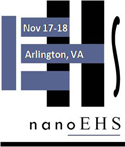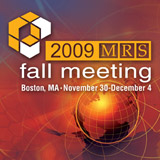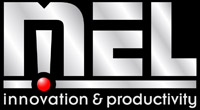| Email not displaying correctly? View it in your browser. |
 Volume
2 Issue 9 - October 2009
Volume
2 Issue 9 - October 2009 |
|
The NNN Newsletter
Nanotechnology Changing the Status Quo in the Healthcare Industry
With a large portion of nanotechnology research focused on biomedical applications, there have been significant breakthroughs reported in the area of nanoparticles for drug delivery and therapeutics. The controllable synthesis and scalable nanofabrication processes now available for specific nanoparticle systems and surfaces that facilitate targeted drug delivery for a range of diseases enable therapies that may minimize or eliminate hospitalizations and peripheral medical treatments (see below). These technologies are best classified as nano-enabled microtechnologies and offer new capabilities such as in-home diagnostics and personalized testing that could eliminate unnecessary spending and simplify the process and application of many medical tests. Regards, Nanoparticle-Polymer Array-Based Sensors for Biomedical Applications
Hazardous Substances Data Bank Adds First Set of Nanomaterials Records
Study
of Chinese Print Workers Claims Evidence of Nanoparticle Toxicity A recent study published in the well-known medical journal, the European Respiratory Journal, has been receiving significant publicity as the authors have claimed their findings support an apparent linkage between workplace exposures to nanoparticles and severe respiratory disease. Specifically, in this study, investigators at China's Capital University of Medical Science related unusual and progressive lung disease in seven Chinese workers, two of whom died, to nanoparticle exposures in a print plant where a polyacrylic ester paste containing nanoparticles was used. While highly tragic and certain to create a stir among regulators, the media, and the general public, it is important to recognize that this study does more to highlight the critical need to follow well-established industrial hygiene practices than to provide direct evidence in humans of any unique health risks posed by ENPs. More... |
Upcoming Events November 3 - 4, 2009 November 8 - 13, 2009 November 8 - 13, 2009 November 11 - 13, 2009 Affiliated Centers Recently Published A Plasmonic Dimple Lens for Nanoscale Focusing of Light Gradient Lithography of Engineered Protiens to Fabricate 2D and 3D Cell Culture Micro Environments Nanodiamond-Insulin Complexes as pH-Dependent Protein Delivery Vehicles Parylene-Encapsulated Copolymeric Membranes as Localized and Sustained Drug Delivery Platforms Nanopost Plasmonic Crystals Friction of Polyaromatic Thiol Monolayers in Adhesive and Nonadhesive Contacts Convective Assembly and Dry Transfer of Nanoparticles Using Hydrophobic/Hydrophilic Monolayer Templates |
|
The National Nanomanufacturing Network Newsletter Subscribe / Unsubscribe from this list. Our mailing address is: The National Nanomanufacturing Network 322 Lederle Graduate Research Center 710 N. Pleasant Street University of Massachusetts Amherst, MA 01003 Our email address is: nnn@nanomanufacturing.org Our phone number is: (413) 577-0570 Copyright (C) 2008 The National Nanomanufacturing Network All rights reserved. Supported by the National Science Foundation under Grant No. DMI-0531171. |
|
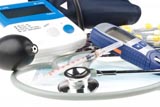 As
the debate on healthcare reform has progressed over recent years,
approaching the brink of sweeping change for better or worse, one
key aspect that has not entered into these discussions is the impact
of high technologies on healthcare, specifically those associated
with nanotechnology. While the notion exists that one key factor
to rising healthcare costs is the expense of research and innovations,
recent studies have shown that this contributes only 25% to overall
cost increases. While the majority of innovations are in the areas
of new equipment, procedures, and therapies, ongoing debate must
break down these added costs on the basis of direct benefits to
patients and medical professionals. In the mean time, the area exhibiting
the most potential to provide long term societal benefits and significantly
lower the overall cost of healthcare is nanotechnology. Nanotechnologies
have the potential to create a paradigm shift in the doctor-patient
relationship and ultimately change the status quo for healthcare
as we know it.
As
the debate on healthcare reform has progressed over recent years,
approaching the brink of sweeping change for better or worse, one
key aspect that has not entered into these discussions is the impact
of high technologies on healthcare, specifically those associated
with nanotechnology. While the notion exists that one key factor
to rising healthcare costs is the expense of research and innovations,
recent studies have shown that this contributes only 25% to overall
cost increases. While the majority of innovations are in the areas
of new equipment, procedures, and therapies, ongoing debate must
break down these added costs on the basis of direct benefits to
patients and medical professionals. In the mean time, the area exhibiting
the most potential to provide long term societal benefits and significantly
lower the overall cost of healthcare is nanotechnology. Nanotechnologies
have the potential to create a paradigm shift in the doctor-patient
relationship and ultimately change the status quo for healthcare
as we know it. Distinguishing between normal, cancerous, and metastatic cells is a major hurdle for the early detection of cancer, as each cell type has a unique molecular signature which includes both intracellular and cell surface biomarkers. The earlier these signatures can be detected, the more effectively they can be treated. A range of techniques have been studied to this end. While some approaches require a priori knowledge of specific mutations in DNA/RNA for both intracellular and cell surface biomarkers, others, such as array-based antibodies, have insufficient sensitivity and specificity to differentiate between normal, cancerous, and metastatic cells. In a recent study, Bajaj, et. al. describe a detection approach based on selective noncovalent interactions between the cell surface elements and functionalized nanoparticle sensors that does not require previous knowledge of specific biomarkers.
Distinguishing between normal, cancerous, and metastatic cells is a major hurdle for the early detection of cancer, as each cell type has a unique molecular signature which includes both intracellular and cell surface biomarkers. The earlier these signatures can be detected, the more effectively they can be treated. A range of techniques have been studied to this end. While some approaches require a priori knowledge of specific mutations in DNA/RNA for both intracellular and cell surface biomarkers, others, such as array-based antibodies, have insufficient sensitivity and specificity to differentiate between normal, cancerous, and metastatic cells. In a recent study, Bajaj, et. al. describe a detection approach based on selective noncovalent interactions between the cell surface elements and functionalized nanoparticle sensors that does not require previous knowledge of specific biomarkers. 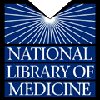 In October, the National Library of Medicine's Hazardous Substances Data Bank (HSBD)—a comprehensive, peer-reviewed database of toxicology information for over 5,000 chemicals—added seven nanomaterials records, the first set of such records in the datafile. The records cover materials such as Carbon Nanotubes, Silver Nanoparticles, and Zinc Oxide Nanoparticles. HSBD is a free and publicly available database; HSBD records include information on human health effects, environmental fate and exposure, occupational exposure standards, chemical and physical properties, as well as manufacturing and use information.
In October, the National Library of Medicine's Hazardous Substances Data Bank (HSBD)—a comprehensive, peer-reviewed database of toxicology information for over 5,000 chemicals—added seven nanomaterials records, the first set of such records in the datafile. The records cover materials such as Carbon Nanotubes, Silver Nanoparticles, and Zinc Oxide Nanoparticles. HSBD is a free and publicly available database; HSBD records include information on human health effects, environmental fate and exposure, occupational exposure standards, chemical and physical properties, as well as manufacturing and use information. 